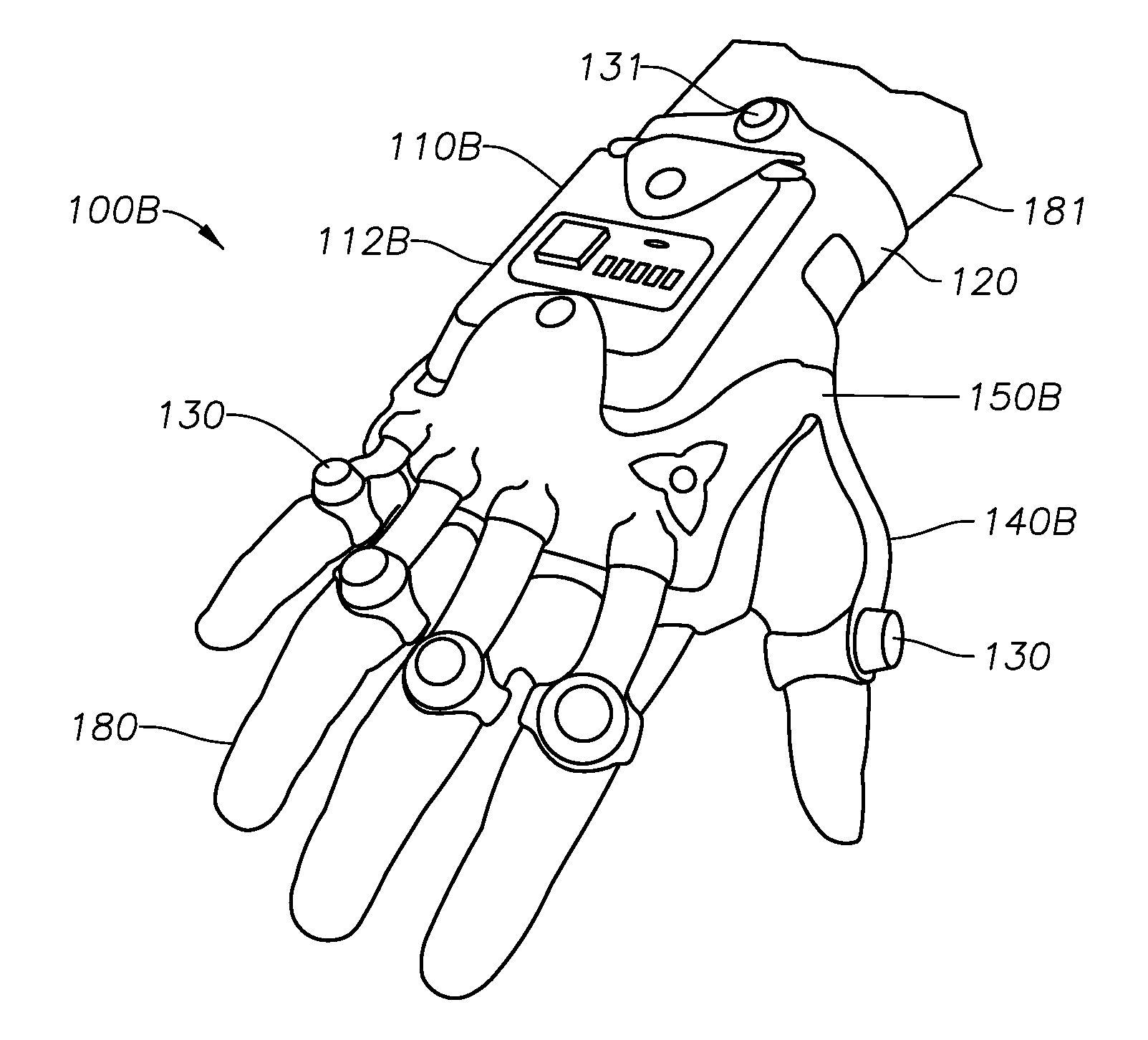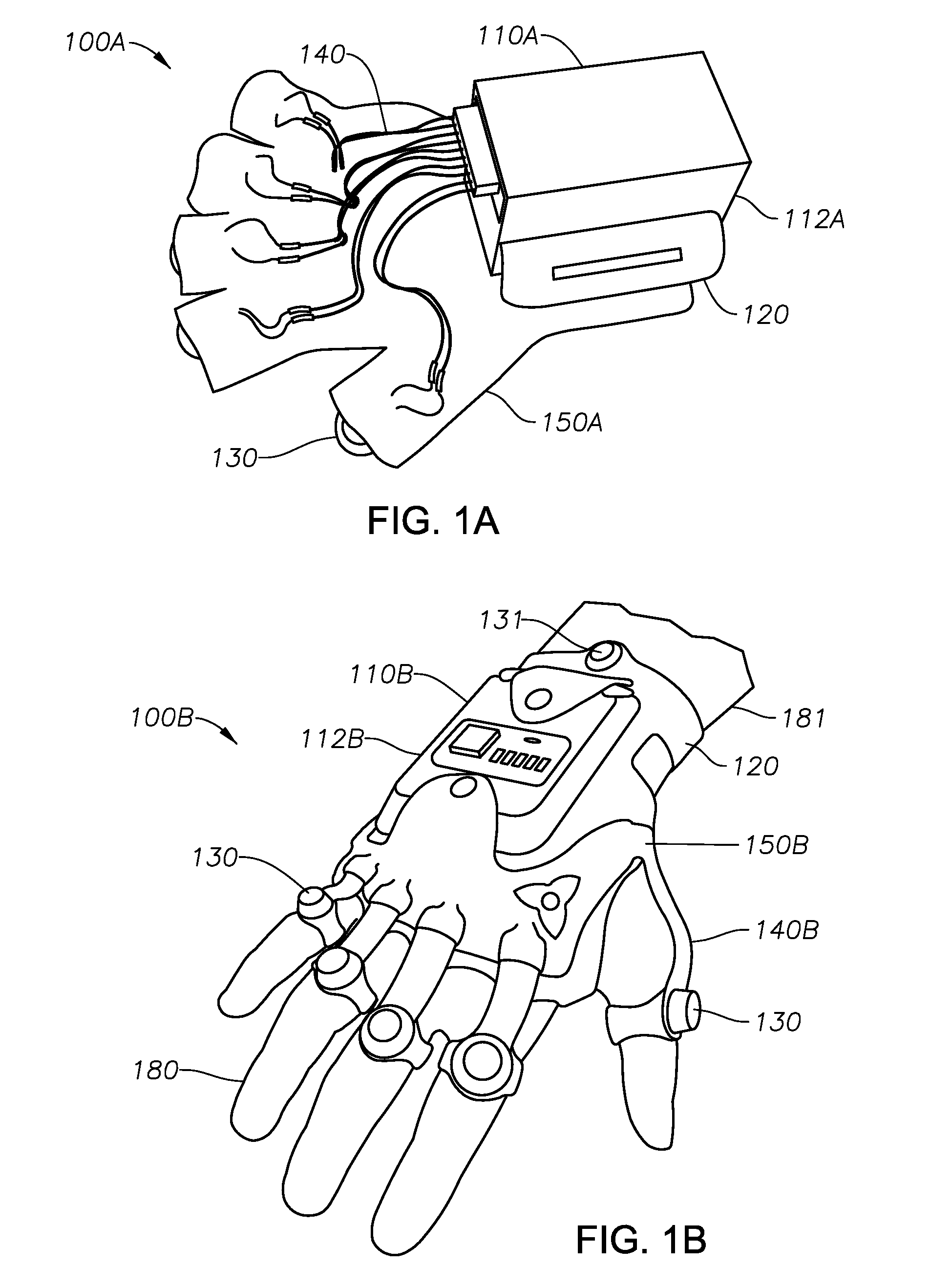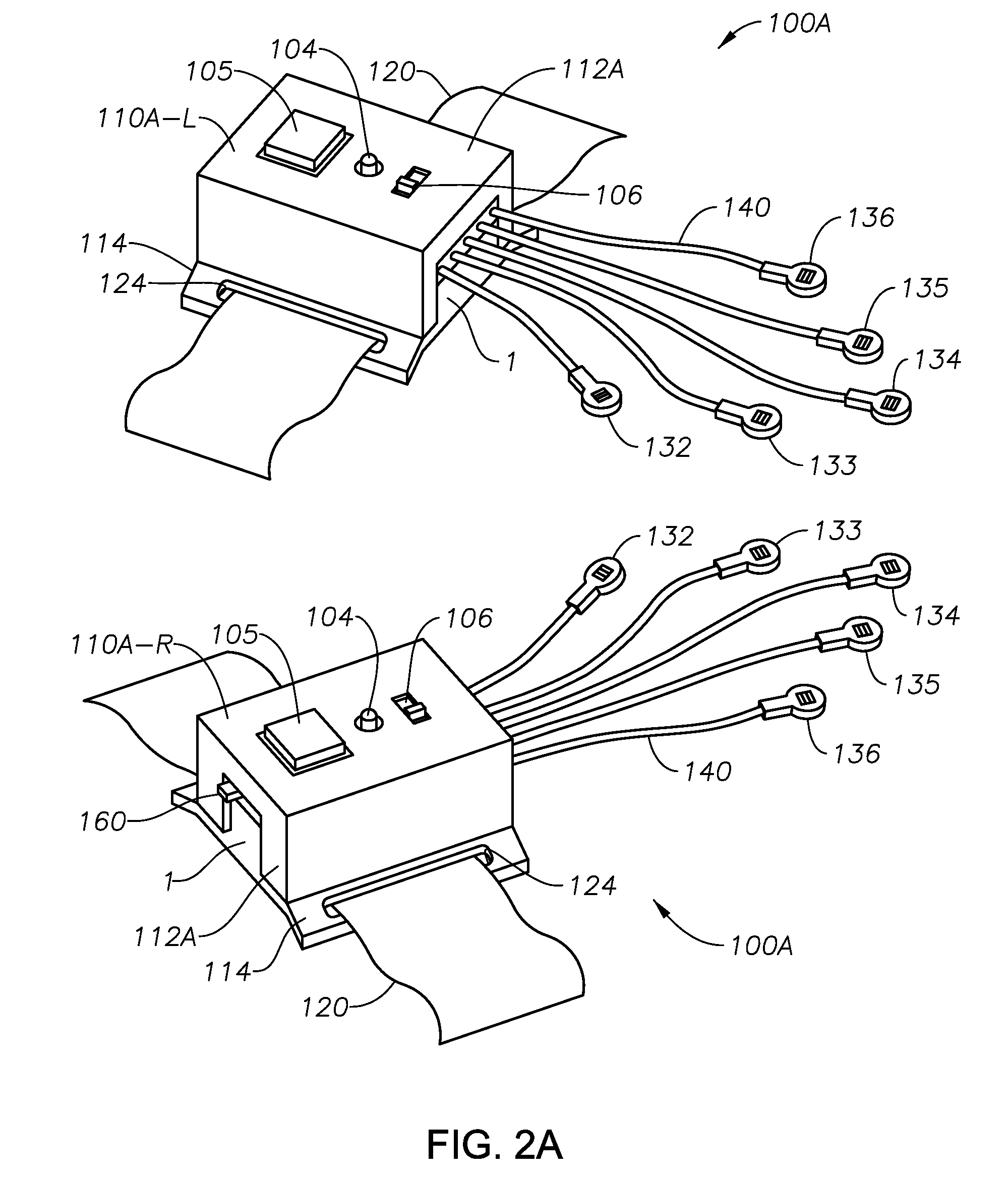Portable Hand Rehabilitation Device
a hand rehabilitation and portability technology, applied in the field of rehabilitation devices, can solve the problems of brain damage, increased damage, and limited motor function of many individuals in the united states, and achieve the effect of prolonging the battery li
- Summary
- Abstract
- Description
- Claims
- Application Information
AI Technical Summary
Benefits of technology
Problems solved by technology
Method used
Image
Examples
Embodiment Construction
[0038]FIG. 1A is a perspective view of a portable rehabilitation device 100A according to the present invention, in one embodiment. The device 100A shown in the illustrative embodiment of FIG. 1A generally includes a control unit 110A. The control unit 110A defines a micro-processor (seen at 111 in FIG. 3A) and associated circuitry held within a housing 112A. The housing 112A, in turn, is optionally secured to a patient's wrist (not shown) or other extremity using a strap 120 or other securing means.
[0039]In one embodiment the microprocessor is the MSP430F2013 provided by Texas Instruments, Inc. of Plano, Tex. However, any suitable microprocessor may be used that allows a patient to activate and control cycles for somatosensory inputs.
[0040]The rehabilitation device 100A also includes a plurality of micro-motors 130. The micro-motors 130 are transducers that convert electrical energy into mechanical energy. In one aspect, the micro-motors 130 are so-called coin vibration motors, suc...
PUM
 Login to View More
Login to View More Abstract
Description
Claims
Application Information
 Login to View More
Login to View More - R&D
- Intellectual Property
- Life Sciences
- Materials
- Tech Scout
- Unparalleled Data Quality
- Higher Quality Content
- 60% Fewer Hallucinations
Browse by: Latest US Patents, China's latest patents, Technical Efficacy Thesaurus, Application Domain, Technology Topic, Popular Technical Reports.
© 2025 PatSnap. All rights reserved.Legal|Privacy policy|Modern Slavery Act Transparency Statement|Sitemap|About US| Contact US: help@patsnap.com



